Eduardo Camavinga – Scouting Report
Eduardo Camavinga is one of the hottest teenage prospects in European football. Being pursued by Manchester United and linked with Paris Saint-Germain, among other European powerhouses, indicates that the midfielder will not stay at Stade Rennais much longer because there are options for him and he is willing to make the next step. But what are his specialities and contributions?
First, we have to acknowledge that an 18-year-old, as good as he is already, is still able to grow into new roles and accentuate certain elements of their game. The role that Camavinga has played for Rennes is not automatically the role he will have to play at other teams for the next decade or so. That said, Camavinga is, at this point in time, a forward-driving centre-midfielder. He is not quite a box-to-box player because most of his actions are connected to his initial position in the centre and usually the middle third, meaning that in that corridor he either forces a turnover, makes clearances or advances the play.
Camavinga is not someone who carries the ball across the field for 20 or 30 yards, unless he sees plenty of grass in front of him and has the chance for a transition attack. But he essentially works best in quick bursts, where he either makes an explosive tackling against a ball carrier, or he beats an opponent to get behind the first or second pressing line. Even when is on the ball in the final third, he will rather go for a quick move against an opponent to beat him and give his team an advantage than simply keeping the spell of possession alive and moving the ball laterally.
Formidable one-on-one player
What adds a degree of spectacle to his game are his dribbles and offensive one-on-one actions, but the quantity varies depending on which stats site you consult. WhoScored has him at 2.3 dribbles per 90 minutes for the 35 Ligue 1 games last season, while FBref has recorded 1.7. But no matter where you look, his success rate is quite formidable at 70 to 71 per cent. What Camavinga does so well to barely lose any offensive one-on-ones is that he uses the first moment after reception to change the direction of his movement and/or push the ball in a certain direction. That means, when an opponent, e.g. the opposing no 10, tries to establish himself in an attempt to stop Camavinga from advancing, Camavinga is already on the move again. Thus, there are barely any static one-on-ones where both parties are standing still for a split second.
Now, one would think that he is simply great at reading the field, checking his close environment and thinking ahead a few steps. While Camavinga has indeed incorporated the shoulder look into his game and seems aware of where pockets of open spaces are, he operates on the advantage that he is just more explosive than his opponents. The changes of direction are not as thoughtful as they are simply dynamic and somewhat surprising – although watching dozens of his matches suggests that he is less surprising since there are specific patterns in his dribbles.
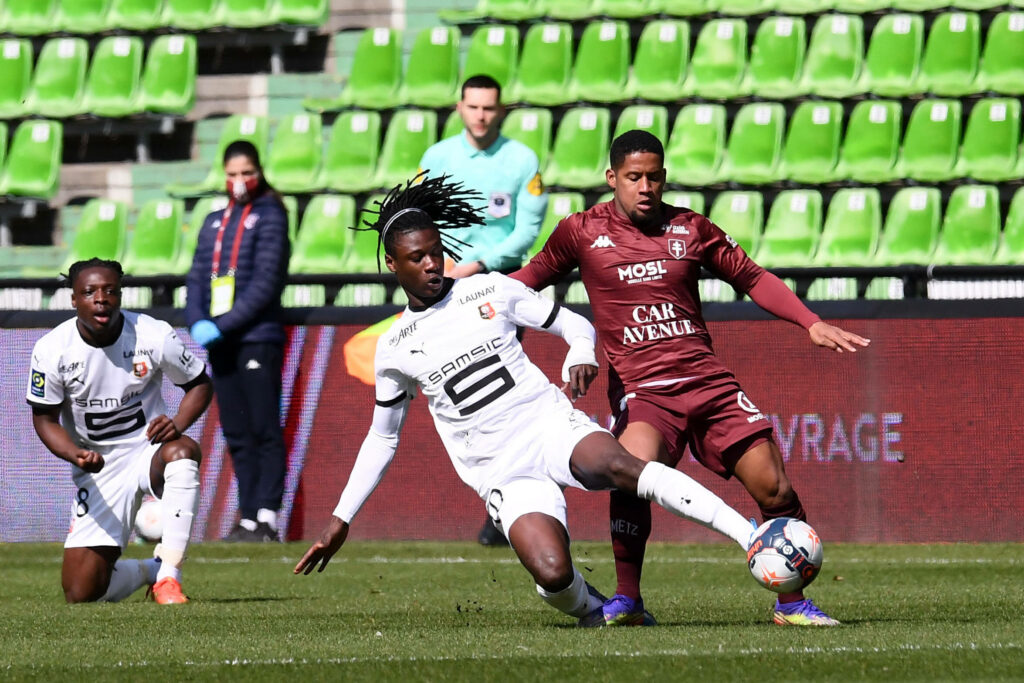
As a left-footer, he likes to do this quick turn to the right if the opponent is very close to him and he likes to do a long push to the left if he thinks he can just bypass an approaching opponent. But since most defenders try to establish themselves and give up some momentum, or they wait to see what Camavinga actually plans to do, they are usually on the losing end – in roughly 70 per cent of cases.
Defensively, Camavinga does the same quick moves to tackle opponents, often with the instinct to use his left rather than his right foot. In the reactive role, he tends to wait a moment to see where the opponent is going but once the other player has slowed down and moves to Camavinga’s left side he goes for it. With 3.9 tackles per 90 minutes, he is among the best midfielders in Europe’s top leagues at least when it comes to quantity. His success rate is at 72 per cent in Ligue 1 and 45 per cent in the Champions League.
Being able to adapt
While such numbers can only tell part of the story, especially with Rennes playing a somewhat different style in the Champions League, we have to look at the level of opposition he has faced in France and how his skills stack up against them. Ligue 1 is an average league in terms of its intensity. Pressing and attacking plays are executed quite methodically but with less urgency than in other domestic competitions in Europe. You rarely see a team trigger a high press with clear trigger signals, though there are exceptions.
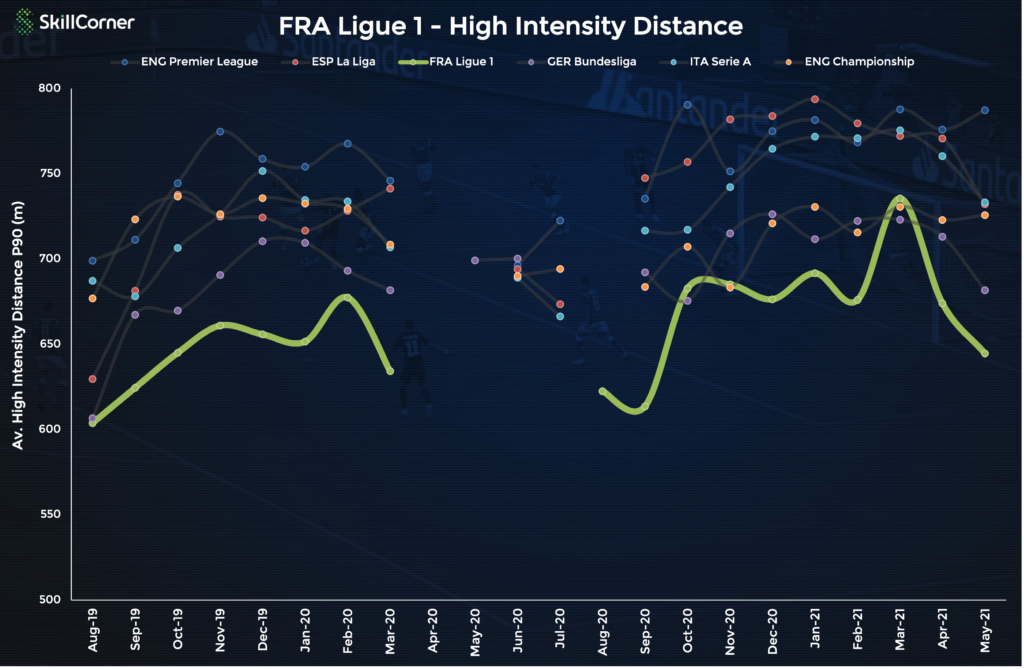
Click on graphic to enlarge
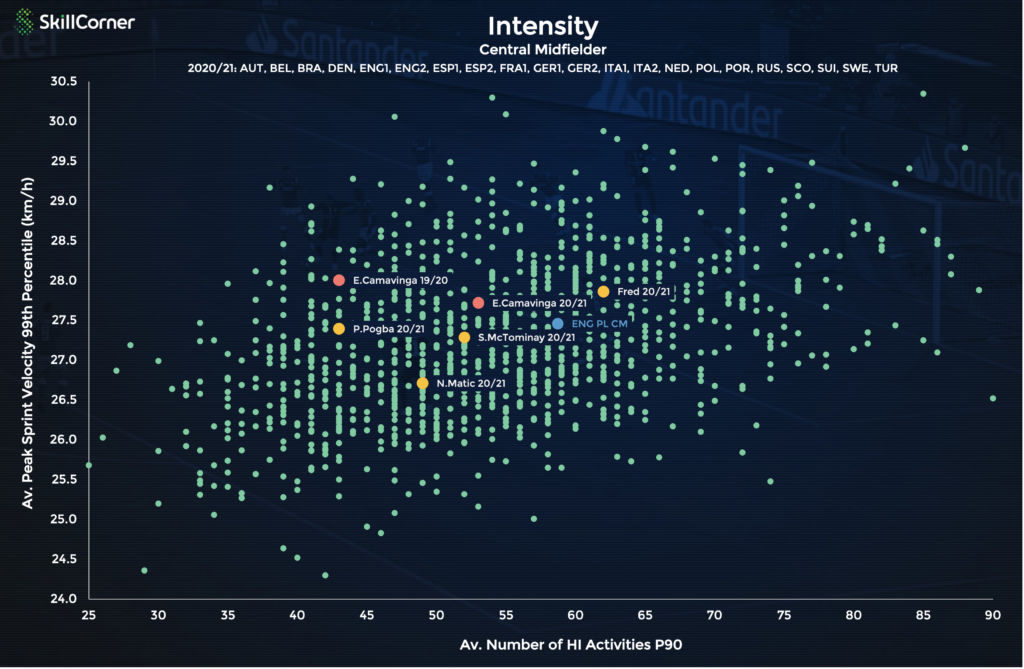
In Ligue 1, Camavinga benefits from the fact that he can approach slow-moving ball carriers who try to advance plays methodically and attack them without facing the fear that he might get beaten. Attacking-wise, he can out-explode slow-moving pressing schemes and simply break behind the line that is in front of him. Once he faces stiffer competition, his game becomes a bit more normal and error prone. However, he has already shown in matches where things were getting complex and difficult, especially when he and his team were in possession, that he is able to adjust his style. If the opposing pressing scheme narrows the space around him with ball-oriented movements, or if his direct opponents are competent defenders, then he operates with less explosive moves or even makes stops to play the ball laterally and secure possession.
Surely, his dribble moves with his sole and the forward-leaning turns on the ball are impressive and make for good highlight reels, but it is actually much more impressive that he shows a degree of maturity when he has to accept that he might not be able to simply fool opponents for 90 minutes straight.
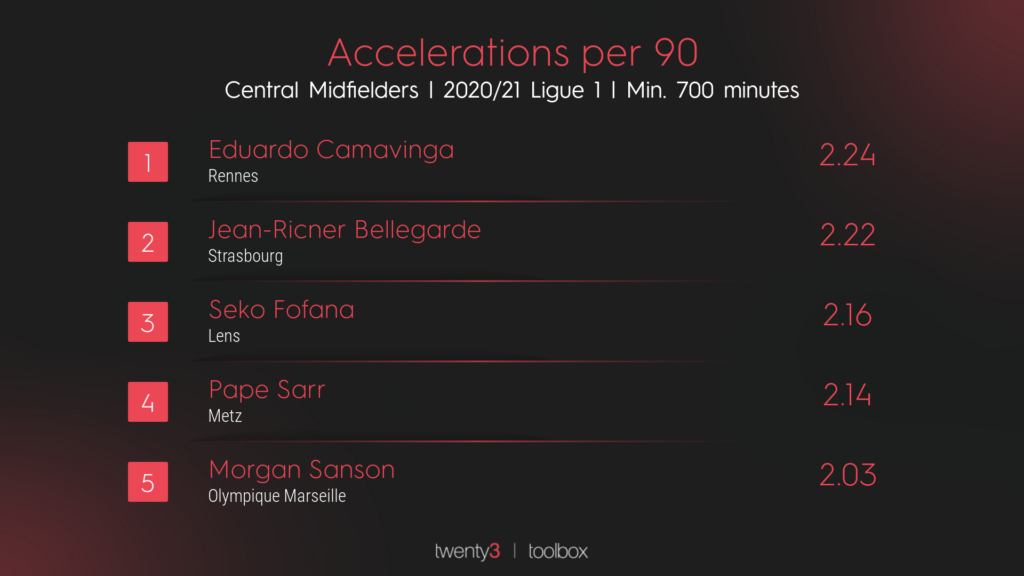
His tactical role
Tactically, Camavinga has played as part of a double pivot with a partner like Steven Nzonzi or as a no 8 in a 4-3-3 for Rennes this past year. Being a no 8 or the more active part of a double pivot are essentially the best roles for him right now. He can push plays down the field and get in behind lines to then start accelerating plays. If a team would decide to field him in a holding midfielder position, Camavinga would have to change his style and dial down his attacking movements which would take away from what makes him who he is at the moment.
A ‘perfect’ holding midfielder, like Declan Rice at the Euro, does usually restrain himself from attempting any risky forward moves and instead keeps plays alive and assists his team-mates. One fact that also goes against the idea of developing Camavinga into a holding midfielder is that most of his success in terms of progressing plays comes from on-the-ball moves rather than passes. With 3.7 progressive passes per 90 minutes, he is in the bottom half of midfielders in Europe’s top five leagues, while his 6.4 progressive carries put among the best 15 per cent – and his roughly 2 completed dribbles across all games last year among the best 5 per cent in Europe, per FBref.
It is not like he was not allowed to make progressive passes at Rennes, but Camavinga is just much better at reading the zones around him than potential interception traps. He also rarely looks up and scans the field more thoroughly. 10 per cent inaccurate short passes in Ligue 1 last year are not the end of the world, but that percentage might grow against more intense and even more sophisticated pressing schemes.
Camavinga should able to learn how to read the entirety of the pitch with more years under his belt, as he has not even played 100 games in his professional career, but one could argue that his entire style is better suited to a no 8 role where he can not only break through lines in the middle third but also enter the final third and use his quick bursts to set up the final pass to a potential goalscorer. Since he has already shown that he can adjust his game and be a bit more calculated in one-on-ones, he could be perfect for a possession-heavy side that looks to have at least one dribbler in the final third who can beat a defensive midfielder and cause organisational chaos in the opposing back line.
Final note
There are still a decent number of ‘ifs’ and ‘maybes’ related to Camavinga and the questions where he will go from here as a player, not to mention where he will end up signing as his contract with Rennes runs out in 2022. However, the foundation with his explosiveness and forward-thinking instinct is there and has already made him stand out among a plethora of young centre-midfielders in Europe.
Camavinga was born in an Angolan refugee camp, as the son of Congolese parents who managed to come to France in shortly after his birth. He has received his French citizenship in 2019 to make his debut for France Under-21. Already at 18, he is a true success story with an immaculate work ethic and no matter where he goes and how good he will be, he has already achieved quite a lot considering where he has come from.
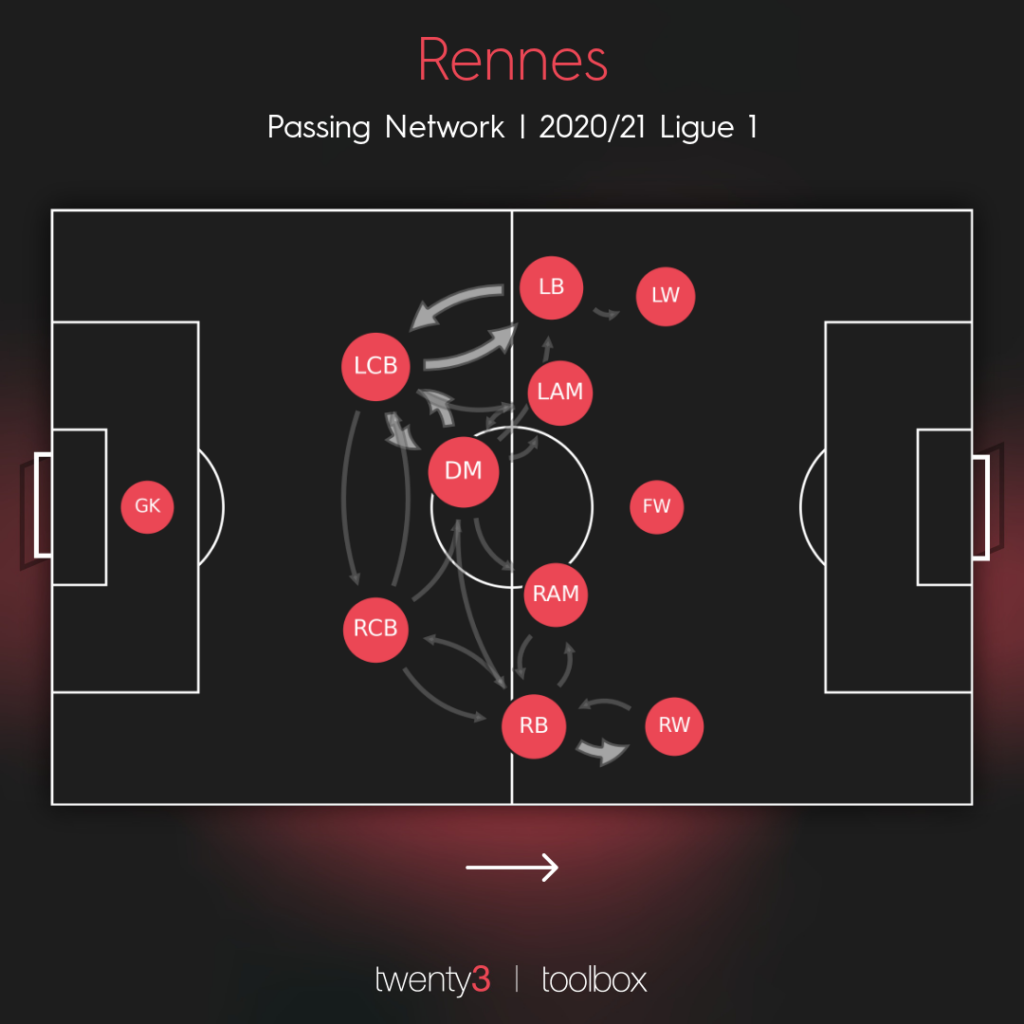
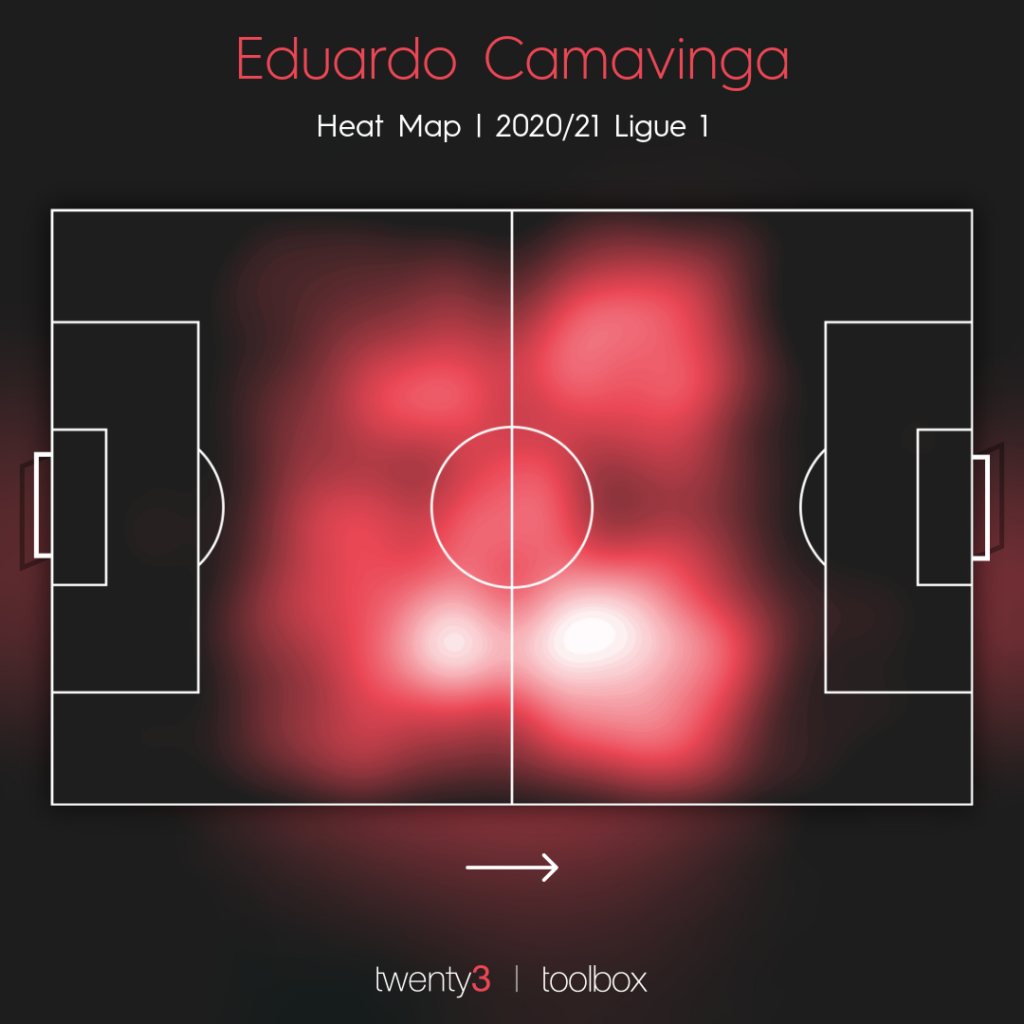
Keine Kommentare vorhanden Alle anzeigen